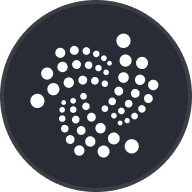
Preț Lido DAO

Limitarea răspunderii
OKX nu furnizează recomandări privind investițiile sau activele. Trebuie să analizați cu atenție dacă să tranzacționați sau să dețineți activele digitale prin prisma stării dvs. financiare. Consultați-vă cu un profesionist în domeniul juridic / fiscal / de investiții pentru întrebări despre circumstanțele dumneavoastră specifice. Pentru detalii suplimentare, consultați Condițiile de utilizare și Avertizarea de risc. Prin utilizarea paginii web terțe („TPW”), acceptați că orice utilizare a unei TPW va fi supusă oricăror și guvernată de orice condiții pentru TPW. Exceptând mențiunile exprese în scris, OKX și afiliații săi („OKX”) nu sunt în niciun fel asociați cu proprietarul sau operatorul TPW. Sunteți de acord că OKX nu este responsabilă sau răspunzătoare pentru nicio pierdere, daună și orice alte consecințe care decurg din utilizarea de către dumneavoastră a unei TPW. Țineți cont că utilizarea TPW poate duce la pierderea sau diminuarea activelor dumneavoastră. Este posibil ca produsul să nu fie disponibil în toate jurisdicțiile.
Informații de piață despre Lido DAO
Capitalizare de piață = Ofertă în circulație x Ultimul preț

Calculator LDO


Performanța prețului Lido DAO în USD
Conversii Lido DAO populare
| 1 LDO în USD | 0,81520 $ |
| 1 LDO în EUR | 0,71412 € |
| 1 LDO în PHP | 46,1322 ₱ |
| 1 LDO în IDR | 13.749,37 Rp |
| 1 LDO în GBP | 0,61140 £ |
| 1 LDO în CAD | 1,1250 $ |
| 1 LDO în AED | 2,9918 AED |
| 1 LDO în VND | 21.163,03 ₫ |
Despre Lido DAO (LDO)
- Pagina web oficială
- White paper
- Github
- Explorator bloc
Întrebări frecvente Lido DAO
Lido este un protocol descentralizat care oferă servicii de staking lichid pentru diverse blockchain-uri Proof of Stake (PoS). Când utilizatorii mizează activele cu Lido, ei primesc echivalente tokenizate ale tokenilor mizați pe o bază de 1:1. Acești tokeni rămân lichizi, permițând utilizatorilor să îi folosească pe diverse platforme.
Lido percepe o taxă de 10% pentru recompensele de staking. În ciuda faptului că este văzut de unii ca un dezavantaj, această rată se aliniază îndeaproape cu standardele din industrie, menținând Lido competitiv.
Cumpărați cu ușurință tokeni LDO pe platforma de criptomonede OKX. Terminalul de tranzacționare la vedere al OKX include perechea de tranzacționare LDO/USDT.
De asemenea, puteți schimba criptomonedele existente, inclusiv XRP (XRP), Cardano (ADA), Solana (SOL) și Chainlink (LINK), în LDO cu zero taxe și fără alunecare de preț prin utilizarea OKX Convert.
Raportare privind gazele cu efect de seră
Calculator LDO


Limitarea răspunderii
OKX nu furnizează recomandări privind investițiile sau activele. Trebuie să analizați cu atenție dacă să tranzacționați sau să dețineți activele digitale prin prisma stării dvs. financiare. Consultați-vă cu un profesionist în domeniul juridic / fiscal / de investiții pentru întrebări despre circumstanțele dumneavoastră specifice. Pentru detalii suplimentare, consultați Condițiile de utilizare și Avertizarea de risc. Prin utilizarea paginii web terțe („TPW”), acceptați că orice utilizare a unei TPW va fi supusă oricăror și guvernată de orice condiții pentru TPW. Exceptând mențiunile exprese în scris, OKX și afiliații săi („OKX”) nu sunt în niciun fel asociați cu proprietarul sau operatorul TPW. Sunteți de acord că OKX nu este responsabilă sau răspunzătoare pentru nicio pierdere, daună și orice alte consecințe care decurg din utilizarea de către dumneavoastră a unei TPW. Țineți cont că utilizarea TPW poate duce la pierderea sau diminuarea activelor dumneavoastră. Este posibil ca produsul să nu fie disponibil în toate jurisdicțiile.









